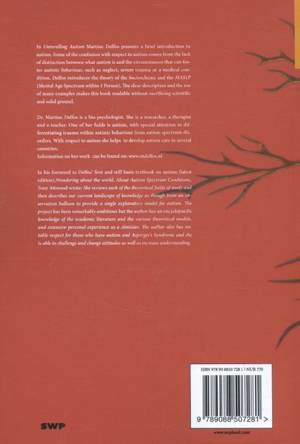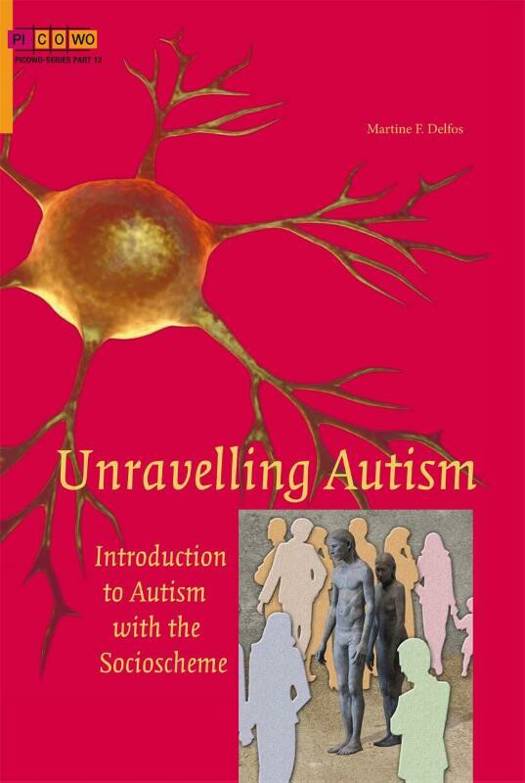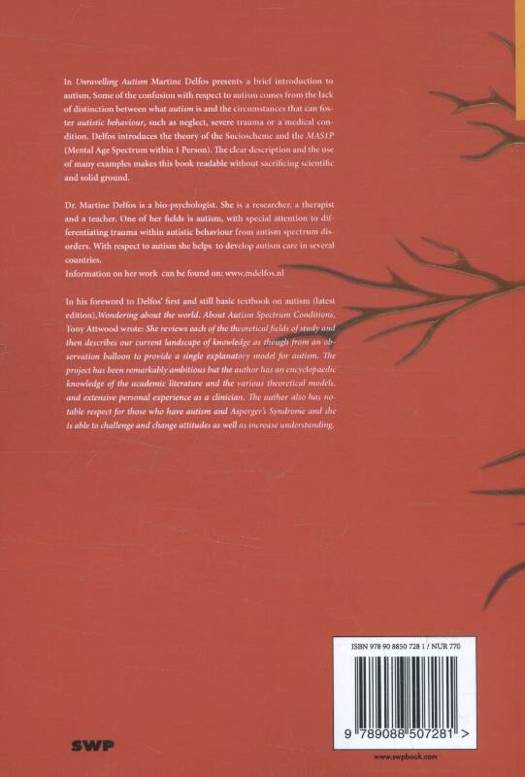
Je cadeautjes zeker op tijd in huis hebben voor de feestdagen? Kom langs in onze winkels en vind het perfecte geschenk!
- Afhalen na 1 uur in een winkel met voorraad
- Gratis thuislevering in België vanaf € 30
- Ruim aanbod met 7 miljoen producten
Je cadeautjes zeker op tijd in huis hebben voor de feestdagen? Kom langs in onze winkels en vind het perfecte geschenk!
- Afhalen na 1 uur in een winkel met voorraad
- Gratis thuislevering in België vanaf € 30
- Ruim aanbod met 7 miljoen producten
Zoeken


€ 20,00
+ 40 punten
Omschrijving
Martine Delfos presents a brief introduction in autism. Often it is difficult to understand autism. Some of the confusion with respect to autism comes from the lack of distinction between what autism is and circumstances that can foster autistic behaviour, such as neglect or severe trauma. Delfos introduces the theory of the Socioscheme and the MAS1P (Mental Age Spectrum within 1 Person). The clear description and the use of many examples make this book readable without losing scientific and solid ground.
Dr. Martine Delfos is a bio-psychologist. She is a researcher, a therapist and a teacher. One of her fields is autism, with special attention to differentiating trauma within autistic behaviour from autism spectrum disorders. With respect to autism she helps developing autism care in several countries. Information on her work is to be found on: www.mdelfos.nl
Tony Attwood wrote in his foreword of Delfos' first and still basic textbook on autism (Latest version: Wondering about the word. About Autism Spectrum Conditions): She reviews each of the theoretical fields of study and then describes our current landscape of knowledge as though from an observation balloon to provide a single explanatory model for autism. The project has been remarkably ambitious but the author has an encyclopaedic knowledge of the academic literature and the various theoretical models, and extensive personal experience as a clinician. The author also has notable respect for those who have autism and Asperger's Syndrome and she is able to challenge and change attitudes as well as increase understanding.
Dr. Martine Delfos is a bio-psychologist. She is a researcher, a therapist and a teacher. One of her fields is autism, with special attention to differentiating trauma within autistic behaviour from autism spectrum disorders. With respect to autism she helps developing autism care in several countries. Information on her work is to be found on: www.mdelfos.nl
Tony Attwood wrote in his foreword of Delfos' first and still basic textbook on autism (Latest version: Wondering about the word. About Autism Spectrum Conditions): She reviews each of the theoretical fields of study and then describes our current landscape of knowledge as though from an observation balloon to provide a single explanatory model for autism. The project has been remarkably ambitious but the author has an encyclopaedic knowledge of the academic literature and the various theoretical models, and extensive personal experience as a clinician. The author also has notable respect for those who have autism and Asperger's Syndrome and she is able to challenge and change attitudes as well as increase understanding.
Specificaties
Betrokkenen
- Auteur(s):
- Uitgeverij:
Inhoud
- Taal:
- Engels
Eigenschappen
- Productcode (EAN):
- 9789088507281
- Verschijningsdatum:
- 12/01/2017
- Uitvoering:
- Paperback
- Afmetingen:
- 161 mm x 236 mm
- Gewicht:
- 232 g

Alleen bij Standaard Boekhandel
+ 40 punten op je klantenkaart van Standaard Boekhandel
Beoordelingen
We publiceren alleen reviews die voldoen aan de voorwaarden voor reviews. Bekijk onze voorwaarden voor reviews.










